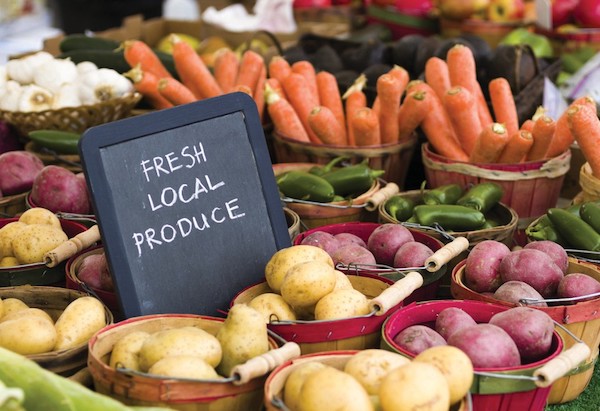Coronavirus has no doubt changed the world, leaving business owners and investors alike the daunting task of figuring out which changes will stick and how they might shape consumer trends. New research from Euromonitor shows that the food and beverage industry might be the only industry to witness any growth at all in 2020. However, that growth probably won’t be spread across all categories as consumers try to tighten their belts and shift priorities.
Some of this year’s growth for food and beverage companies will no doubt come from consumer stockpiling that happened as the coronavirus began to make headlines in the U.S. While that behavior has since declined, consumers are still spending far more on food and beverages at the grocery store than they were pre-pandemic. Euromonitor expects that trend to continue in part due to cutbacks in spending – fewer restaurant meals – but also in part due to changes in values and priorities.
Euromonitor sees the “COVID-19 era” being shaped by stress and anxieties about the future, with paramount concerns over hygiene, physical health, and mental wellbeing. Decisions will be driven by obvious things like affordability and value, but also the increased desire for a more self-sufficient lifestyle. That likely means a shift away from conspicuous consumption and more focus on things that meet real needs, as well as reflect consumers’ values.
We’ve already witnessed some crazy consumer spending shifts at the grocery store. One of the most notable has been a resurgence in older brands that have been on the decline amid growing competition from newer, hip products. But as the lockdowns set in, the sales trends reversed and everyone wanted their childhood favorites. Consumer analysts equate this to people craving comfort food during the pandemic. Campbell’s Soup, for instance, posted a +34.4% increase in food and beverage sales between mid-March and mid-April, compared to last year and following years of steady declines.
Considering heightened health worries – along with pre-coronavirus trends – it’s expected consumers will cut back on the more unhealthy and super-processed foods but economic anxieties will probably hinder any rush back to $10 energy bars and $9 cold-brews. This could spell trouble for high-end “health and wellness” brands but some analysts say it opens the door for big food brands to introduce their own “healthy” products at better price points.
At the same time, industry experts have cautioned that pandemic-induced shortages have eroded brand loyalty as customers have been forced to try new products. Some have discovered that they like the new option better. Those experiences have also made consumers more comfortable with trying different brands and Nicole Collida of the Food Industry Association doesn’t believe consumers will return with the same degree of brand loyalty they had before. That means brands need to focus more than ever before on their underlying quality as they may not be able to skate by on that loyal customer base any longer.
One interesting prediction I’ve seen about post-pandemic grocery shopping is that consumers will stick with online shopping for staple items and reserve in-store purchases for specialty items or things that require closer inspection like fresh produce and meat. Already, some supermarket chains have created “ghost grocery” locations — fulfillment centers that are closed to the public except for curbside pick-up orders.
Industry analysts also believe grocers will drastically reduce the number of items on their shelves, in part due to more online shopping but also because of the pandemic experience that exposed inefficiencies in the food supply chain. Laura Strange, spokesperson for the National Grocers Association, says that smaller grocers have faired better at keeping some popular items in stock than large chains thanks to their longstanding relationships with local farmers and suppliers. Perhaps we’ll see a rise in more specialty shops like butchers and bakeries?
Euromonitor expects the brands and businesses that successfully emerge from the pandemic will be those most prepared for an increase in online consumption. Their research indicates that consumers, having spent the worst of the pandemic doing everything virtually, are more comfortable with the digital world in general which they see bringing a shift toward buying and doing more things online. Online grocery shopping doesn’t appear to have lost any momentum – online grocery dollar sales growth totaled $1.3 billion in May, the same as in April.
Another takeaway from the report is the message that consumers want to hear from brands going forward. Euromonitor says brands will be expected to put people and their wellbeing before profits. Successful companies will be those who understand the health and safety concerns that dominate the thinking of their consumers and employees. I’ve seen the same prediction from dozens of other analysts and it fits with the longer trend term we’ve already seen of consumers demanding more transparency and accountability from brands. (Sources: Euromonitor, Food Dive, Supermarket News)









